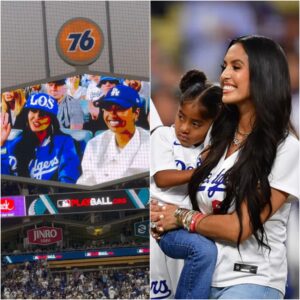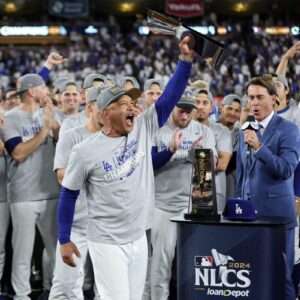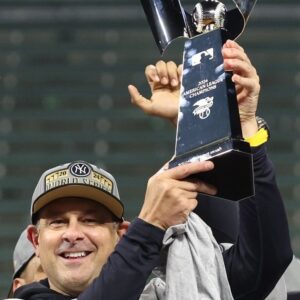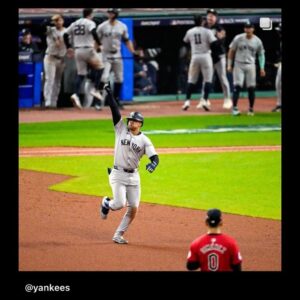
The Los Angeles Dodgers began this National League championship series by making postseason history with a record-tying scoreless innings streak. After a pitching setback in Monday’s Game 2, it didn’t take them long to pick right back up where they left off.
Led by starter Walker Buehler, the Dodgers notched their fourth shutout in five games, scoring an 8–0 win over the New York Mets at Citi Field to take a 2–1 series lead.
On a chilly night in Queens, the Mets’ bats went silent in front of their home crowd, as five Los Angeles pitchers combined to blank New York’s offense for the second time in three games. The Dodgers, meanwhile, did a better job taking advantage of their scoring opportunities than their opponents to seize the upper hand in a series that’s seen big swings on each side thus far.
Here are the three key takeaways from Game 3.
Walker Buehler reminds us he’s still got it
Using a phrase like “still got it” for a player two months removed from his 30th birthday feels silly, but it’s appropriate in Buehler’s case. The righthander’s first year back after recovering from his second Tommy John surgery was pretty much a disaster, as Buehler went 1–6 with a 5.38 ERA during the regular season. The man who owned a 2.94 career postseason ERA looked overmatched in his first playoff start this year, giving up six runs in five innings with zero strikeouts in a Game 3 loss against the San Diego Padres during the NLDS.
On Wednesday, though, Buehler turned back the clock. Staked to a 2–0 lead after the top of the second inning, Buehler loaded the bases with one out in the bottom half of the frame and looked primed for an early exit before notching back-to-back strikeouts against Francisco Álvarez and Francisco Lindor. He left two more runners stranded in the third and retired the side in order in the fourth before manager Dave Roberts decided enough was enough, pulling Buehler after 90 pitches.
In all, Buehler scattered three singles with two walks, hit a batter and struck out six, but those numbers short sell just how big an outing this was for him. He generated a 53% whiff rate on 34 swings after failing to strike anybody out in his most recent outing, inducing four more swings and misses than he had in three years, and reached the 90-pitch mark for just the second time in his last seven starts. It was far from perfect, but for a team sorely lacking in starting pitching options, getting four shutout innings from one of the few healthy starters left was a massive lift. And after Buehler’s last outing saw him surrender six runs in the second inning to put Los Angeles deep behind the 8-ball, Roberts needed to see signs of progress to trust Buehler for the rest of this month. He got that on Wednesday, and L.A. has a 2–1 series lead because of it.
Shohei Ohtani continues his RISP domination
Since Game 1 of the NLDS in which he went 2-for-5 with a three-run homer, Ohtani has been relatively quiet this postseason, going 4-for-22 with 10 strikeouts and no extra-base hits in the six games since. After starting Wednesday night 0-for-3 with a walk, Ohtani broke the game open with a towering three-run home run in the eighth inning to give Los Angeles a 7–0 lead and essentially seal the victory.
The blast now gives Ohtani 17 hits in his last 20 at bats—yes, you read that right—with runners in scoring position. He’s also 7-for-9 with two homers and eight RBIs with runners on base this postseason, and 0-for-22 with 11 strikeouts with the bases empty.
That begs the question as to why Roberts doesn’t move him down from the leadoff position. The Dodgers’ skipper balked at that idea after Game 2 and likely won’t change course now, instead opting to maximize the amount of plate appearances his designated hitter will get each night. Opinions may vary on whether that’s the right move or not, but regardless, Ohtani will have more run-scoring opportunities if the bottom part of the Los Angeles batting order can deliver. Speaking of …

Dodgers’ supporting cast is outplaying the Mets’
Kiké Hernández didn’t get his first start this postseason until Game 4 of the NLDS, making his way into the lineup after the injury to Miguel Rojas. It made sense that he began the playoffs on the bench given his .229/.281/.373 slash line this season—except for the fact that it’s October, which means it’s time for baseball’s version of Robert Horry to come to life.
Hernández is a postseason wonder. Coming into Wednesday’s game, he had 14 homers in 77 career playoff games with an .890 OPS. He upped his total against the Mets, driving a two-run shot in the sixth inning to extend the Dodgers’ lead to 4–0 and give the bullpen some much-needed breathing room.
And he wasn’t alone as far as supporting players rising to the occasion. The Dodgers have been able to mount this decade-plus stretch of postseason runs because of their unmatched organizational depth, which routinely allows them to call on the services of role players like Hernández and Max Muncy—who reached base in all five of his plate appearances and tied the Dodgers’ all-time record with his 13th career postseason homer on Wednesday—along with countless others.
That Hernández was not in the forefront of the team’s plans until an injury forced the issue is fitting, both for the team that never lacks in viable replacement options and for a player who never seems to miss an opportunity at delivering a key October moment.
The Mets, meanwhile, are dying for a clutch moment from someone outside their star core. Outside of Lindor, Mark Vientos and Pete Alonso, big contributions have been hard to come by for New York’s offense. The quintet of Brandon Nimmo, Starling Marte, Jose Iglesias, J.D. Martinez and Álvarez have combined to go 9-for-44 (.205) this series, with 13 strikeouts and just one extra-base hit. If that trend continues, this series might not make it out of New York.





